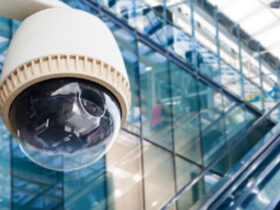Videoconferencing is rapidly gaining in popularity, and it’s hardly surprising. Basically, videoconferencing allows people to communicate in real time, no matter where they are located. It can be as few as two people, or it can be thousands. The participants can hold a meeting or conference, compare charts and generally do everything they could do if they were all in the same room together. This is all done via audio and video transmission through the wonders of the internet.
The list of advantages gained from using videoconferencing is long, but here are a few of the main advantages. The most obvious advantage is the enormous savings involved when people don’t need to travel. An average business trip usually involves at least one night spent in another place, and costs incurred include flights, transport, meals, accommodation, entertainment, and the list goes on. If you need ten people at a meeting, and add together all the costs involved, the total is staggering.
Remember, too, that not only is travel costly, it takes time. So those ten executives have to take two days out of their busy schedule, for example, to attend a half-day meeting at head office. With videoconferencing, they can allocate the half-day, and spend the other day and a half doing productive work in their office. Using videoconferencing provides big savings in both money and time.
If the video conference involves one person or team making a presentation, they’re in their home environment. So they can’t accidentally leave the most important graph on their desk back at the office – they have everything readily available. It also means that questions can be answered fully, instead of the presenter needing to return to his office before he could access the required information.
Videoconferencing also makes it easier for business to access outside experts. In a medical environment, for example, researchers from around the world can get together regularly and compare notes, making it easier to pool their findings and accelerate the process of finding answers. This type of collaboration would never happen if the experts were constantly required to travel to stay updated, because they’d never have time to do their research. Cooperation on this level isn’t just beneficial for the medical profession; it can be used in almost any profession you can think of.
A slightly less direct benefit, but a benefit just the same, is that employees will need to learn the basics of presentation skills and research, in order to participate productively in videoconferencing. This encourages the employee to stay up to date with information relating to their field, so that they’re confident they can answer questions during a videoconference if required.
Videoconferencing is also a great deal more personal than a phone conference. A high percentage of our communication is through non-verbal cues, so seeing the person making a presentation can gives us so much more information. It also means that visual aids can be used, which speeds up the process of explaining certain types of information. There’s no need to wait while a set of graphs is posted, faxed or even emailed and printed – you can see them instantly. And if extra information is required, it can be pulled out of the file and displayed, with no need for any delay. If you’re using videoconferencing to deal with a potential client, it becomes much easier to develop a personal relationship, which is an important element in any business relationship.
Video conferencing also means that all the required people can be present at the meeting. Previously, expense considerations may have meant that only one employee could attend a certain meeting, and upon their return they would then brief everybody else about what went on. This inevitably left gaps in the feedback, as no one person would take in every single thing that occurred, or would even know that one particular piece of information was of special importance to another staff member. Videoconferencing means that everybody hears and sees everything, and can extract the information that is most relevant to them. They also get a personal feel for the other people involved in the conference.














